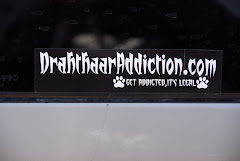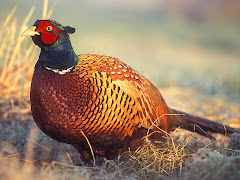 One of the most misunderstood areas of dog training by beginners,is how,why and when to administer "corrections" to their dog.
One of the most misunderstood areas of dog training by beginners,is how,why and when to administer "corrections" to their dog.Some trainers and handlers choose to use newer methods for different dogs. One promotes strictly motivational methods to train dogs. Some people call this clicker training or marker training. The true purists in clicker training don’t feel corrections are ever needed.
I would have to disagree with those people. 99% of all dogs are going to need corrections to maintain consistency under distraction, in my opinion.
Determining when corrections are introduced, what type of corrections are used and how they are applied, results in how effective they will be in your training.
The wrong kind of correction,a poorly timed correction,even lack of correction results in inconsistent training and poor communications with your dog.
If you are around dogs long enough you will hear the term "FORCE TRAINING". This word can be misinterpreted and I have witnessed this type of training to work. But unfortunately sometimes it hurts the relationship with your dog.
To understand what force training is you should first know how to motivate a dog. There are 4 methods to motivate a dog to do what you want it to do:
1- using food rewards
2 -with toy rewards
3- with praise from his handler
4- Or you can motivate your dog to follow commands by forcing him to do what you want.
The problem is when owners don't understand the timing and application of force, their dogs become stressed and the compliance goes away.
Correcting a dog for refusing to comply with a command that it absolutely knows what the command means IS NOT forced training.
Asking a dog to perform a behavior that it has never been taught to do and then correcting that dog until it does perform that behavior IS forced training.
The only time to apply a correction in training your dog is after you have taught your dog the meaning of a command. When you are 110% sure your dog knows what you mean when you say SIT or DOWN, and the dog refuses to comply then the dog needs a correction for non-compliance.
Now the skill of training your dog is to know what kind of correction to apply,what level is correct to give,and finally do you offer a reward after the dog complies or do you just go on with training. This knowledge comes with a handlers consistent exposure and with experience.
Another often used method in dog training is called negative punishment. Negative punishment is used with trainers who use food rewards and toy rewards. It simply means when dogs make mistakes the trainer corrects the dog by witholding the reward. There is no physical correction. Withholding the reward is enough for many dogs. Withholding the reward becomes the negative punisher.
With repetition dogs learn to understand this concept. There is no anger involved. There is no threat involved. There is no change in your voice to signify a change in your attitude.Simply put, the reward is held for ransom.
An example is with pet dogs that jump up on their owner. When the owner has a reward in hand and the dog jumps on them, they simply say NO and wait until the dog backs off before giving the reward. If the reward has a high enough value to the dog it will not take long for the dog to learn that the only way to get the reward is to NOT jump up on it's owner.
Positive punishment means the dog gets a physical correction.
For some dogs negative punishment is not enough. These dogs need positive punishment.
This means the dog knows what he is suppose to do and he chooses not doing it, either as a result of lack of motivation or a lack of concentration in the face of of distractions.
This type of behaviour means there is something going on that the dog wants more than what it is you have. At this point the dog needs to get a correction and the correction needs to be more complex than just removing the something he wants.
This is where we add positive punishment. This means we add a correction after the word NO. Some trainers will use two words. One for negative punishment (withholding a reward) and a different word for positive punishment (adding a correction). The fact is over time every dog is going to figure this out.
It is critical that trainers not add positive punishment until the dog knows exactly what he is expected to be doing. To introduce positive punishment before the dog understands the meaning of a command simply reverts back to Forced Training.
The way positive punishment works is to say "NO" and split second later give a leash correction or in later training a correction with a remote collar.
Mature dogs are going to quickly figure out that when you say "NO" they need to immediately change their behavior and do what you want or if they don't you are going to correct them.
The dog is basically going to anticipate the correction and quickly change their behavior. In other words it is going to behave just as if you just gave him a leash correction. When you test your training and you see behavior changes immediately after you say "NO" that's when you don't need to give a correction every time you say "NO". All to often I see handlers saying NO,NO,NO!! and the dogs behavior doesn't change at all. Obviously what this handler is doing is not working. That dog doesn't respect the positive punisher. Either the correction was not strong enough or the correction did not follow the "NO" often enough for the dog to believe the correction was ever going to come.
The bottom line for positive punishment to work is the handler needs to do something to have the word "NO" mean something to the dog. Withholding a reward doesn't mean anything because the dog is distracted with whatever else is going on that they don't care about withholding the reward and the dog has not learned to respect the word NO.
The fact is we would much rather work with reward based training. Its more fun to do, the dogs like it and it's way more forgiving to a handlers mistakes, especially when the dogs are learning. If a handler makes a mistake when the dog is learning its not a big deal. They can get past it with a bunch more reps.
Handlers that make mistakes with positive punishers have dogs that slink around and act like their world just as soon not be there because they don't understand what just happened and they don't want it to happen again. As you start positive punishment your timing needs to be perfect. The handler/trainer needs to understand the importance of his or her timing because if you screw it up you are not going to fix it very quickly.
Handlers must also be very careful with distractions and punishers. The reason is that when its done poorly the dog will associate the distraction with a punisher. It's very easy for a handler to screw up and make a dog fearful of certain distractions.
What handlers need to think about is if a correction is warranted because they know the dog understands what's being asked but the handler finds himself having to correct the dog over and over again for the same thing, then something is wrong. Either the correction isn't hard enough, the dog didn't understand what was being asked or the distractions are to much for the dog. Or when they know the dog understands what they are asking them to do and the handler gives a correction for noncompliance and this becomes a pattern where the handler finds himself continuing to correct the dog for the same thing again and again and again - well the handler needs to step back an re-evaluate what they are doing because it's not working.
Just a little something to keep in mind this training season as you work to polish up your dog for home,testing or hunting. Remember to keep a positive attitude, stay in control and if tempers flare, walk away, re-evaluate and return with a confident, assertive attitude.
"Your dogs behavior is a direct reflection on your ability as a dog trainer."
HAPPY TRAINING!!!!
"Your dogs behavior is a direct reflection on your ability as a dog trainer."
HAPPY TRAINING!!!!










.jpg)


I was lucky enough to be able to train my schnauzer with just positive reinforcement, mostly using treats and saying good dog while petting her.
ReplyDelete